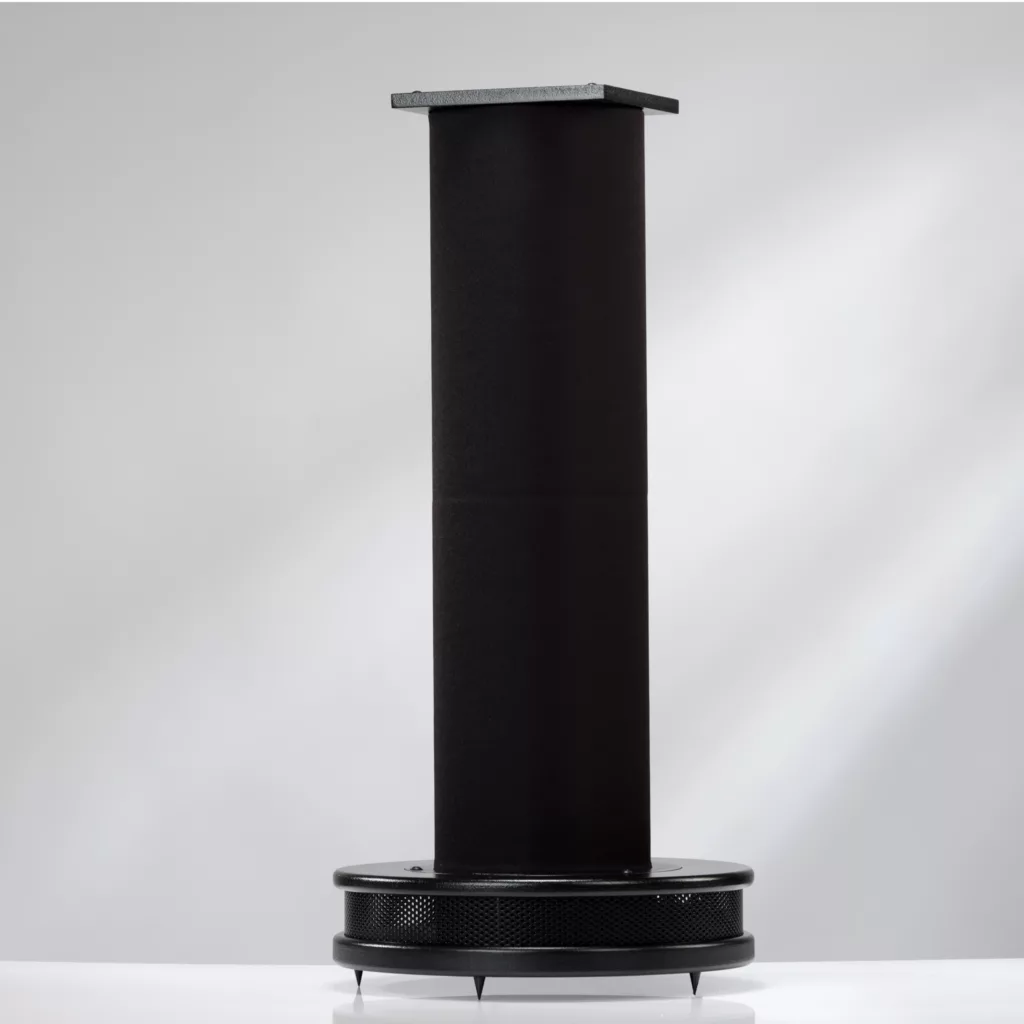I wrote of my experience comparing the P3+Nelson vs Harbeth 5 in the Fidelis room at AXPONA for 20+ hours in the Harbeth 5 thread.
Here's how I would've designed this P3/LS3/5a "extender stand".
First, the great majority of attendees agreed that the columnar body should've been rectangular. Indeed, if matching the contours of the P3 and extending to the floor, it' could house a proper 6-6.5" driver with increased total volume instead of the small 110mm (4.5") used. That might extend performance below the existing -3dB 35Hz spec a few Hz. But that's not as important as redoing the DSP so as to cross to the P3 at a much higher freq than 75Hz, which leaves a cavernous hole in the 80-300Hz low mids that was so evident at AXPONA when switched back and forth with the adjacent Harbeth 5.
Shaw's argument that the P3 can't play very loud may excuse the size of the 50w amp pushing this too-small driver, but that Harbeth couldn't get a seamless integration that provides body and scale left those P3 owners visiting the show who already use subwoofers in tandem shaking their heads in disappointment. The delta between the P3 and H5 was HUGE. Steinways became toy pianos, bassos tenors, etc.
I cannot resist comparing this scheme to my old trusted Verity Audio Parsifal Monitor cum Base two-part setup, where the passive woofer base very seamlessly integrates with the Monitor top both visually and musically with a cross at 150Hz, to create Verity's mnost popular and enduring speaker.
Given the P3 is now up at $3k, a proper powered 6.5" matching veneered woofer base/stand could be offered for $4-4.5k, let's say, and perhaps compete with the H5 at $7.8k for those for whom a narrow, more modern and SAF aspect ratio is required.
I unboxed and built up this P3+Nelson setup for the show, and was also much unimpressed with the poor quality finish paint of the base plates, cheap cardboard-like column, and thin MDF upper plinth. Only in very selected material with upper mid/treble signal supported by a naked standup bass did the P3+N somewhat acquit itself as acceptable. In 95% of the program material everyone agreed that the Super 5 was far better. (Yes, I was careful to adjust for the 3dB delta.)
I suppose applause is due Harbeth for using DSP to correct phase anomalies in the Nelson-to-P3 transition, but the huge hole in the lower mids screams an under-designed product that is way too little for way too much. But I see promise here in a bigger and prettier MkII.


